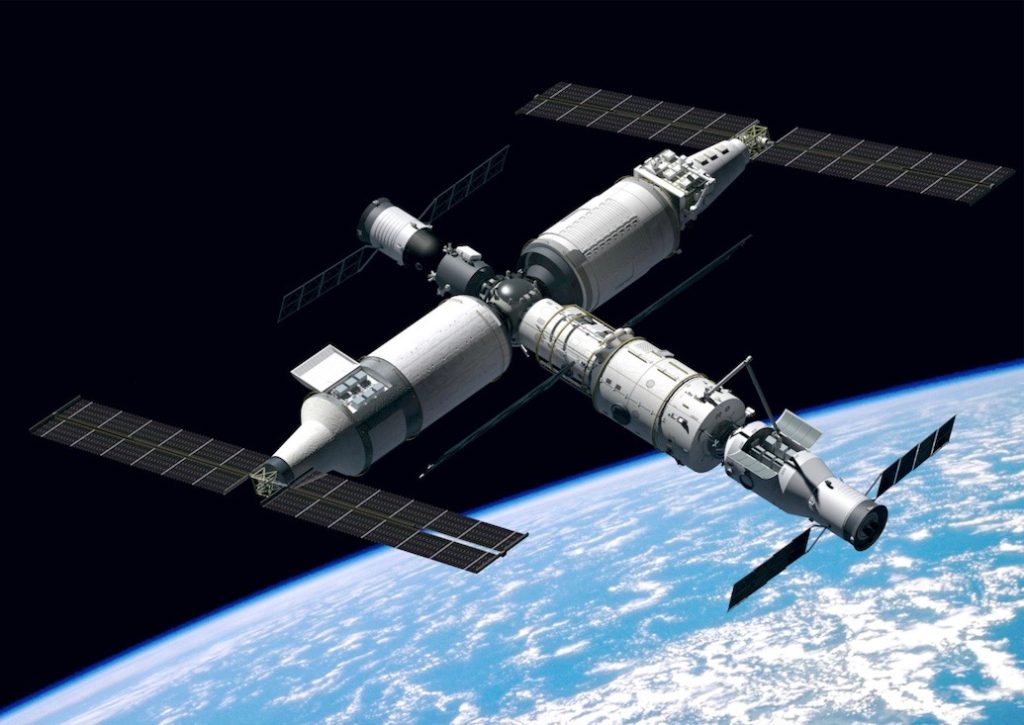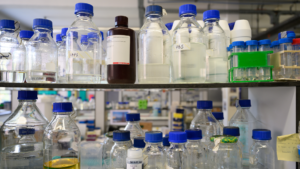China plans to expand its space station

Beijing, The Gulf Observer: China plans to expand its space station in near-Earth orbit by launching a new module that will dock with the existing structure and create a cross-shaped combination.
As the space station construction completed in December, China Manned Space Agency (CMSA) made public its follow-up plans at an exhibition in Beijing of achievements in China’s manned space program of 30 years.
The new module, which will function as a node cabin, will have multiple docking ports like the core module Tianhe, allowing the space station to accommodate more spaceships, according to the CMSA.
The agency added that China plans to extend the in-orbit operation of its space station by implementing updates and upgrades.
The exhibition also showcased China’s development of a new-generation reusable near-Earth crewed spacecraft with the capacity to carry four to seven astronauts into space and bring back over 700 kilogram of payloads to Earth. The country’s existing spaceship can launch three astronauts into space and bring back 50 kilogram of payloads.
The space station will shift its priority from technological breakthroughs in the building stage to the performance of space applications. A slew of experiments is currently underway or poised to begin, in the space station. Some of them are aimed at figuring out how to resist microbes that may damage spacecraft metals, produce oxygen from algae in space, and convert heat energy into electricity.
Recently, the in-orbit Chinese astronauts of the Shenzhou-15 crew successfully obtained 3D structural images of their skin cells with the country’s self-developed two-photon microscope, which is the first of its kind in the world.
In the coming years, over 1,000 applications across 65 projects will be implemented on the space station. This effort aims to advance key technologies in special material preparation, stem cell and regenerative medicine, high-precision time-frequency systems, and quantum precision measurement, according to the CMSA.
Chinese Survey Space Telescope, also known as the Chinese Space Station Telescope (CSST), will be launched as a part of the space station project, and the telescope, during its normal observations, will fly independently in the same orbit as China’s space station.
The CSST is a space-based optical observatory for astronomers to carry out sky surveys, capturing a general map or images of the sky. It can dock with the space station for refueling and servicing as scheduled or as needed, making its maintenance more affordable than Hubble.
This flagship telescope of China is projected to survey an all-sky area with 17,500 square degrees in 10 years after its operation, in order to explore frontier sciences like the accelerating expansion of the universe, dark matter and dark energy, according to the CMSA.
During this exhibition, the CMSA also unveiled China’s blueprint for human lunar exploration, which aims to send three astronauts into lunar orbit and allow two to land on the moon.
Plans are underway for a lunar probe and sample return that will involve collaboration between humans and machines.
A scale-down model of the Long March-10 rocket was also displayed at the exhibition. The new-generation launcher will be used to bring no less than 27-tonne payloads including the lunar lander and moon craft into Earth-moon transfer orbit.
The rocket measuring 88.5 meters in height, will have a liftoff thrust of about 2,678 tonnes and will be powered by liquid hydrogen, liquid oxygen and kerosene.
According to the exhibit profile, a rectified version of the rocket, without roll boosters and with a liftoff thrust of approximately 873 tonnes, is planned for the space station’s manned and freight missions. Additionally, a portion of the rocket will be designed for reusability.
The miniature models of the lunar lander and moon craft have also been put on display at the exhibition, which began on Friday and will run for three months.
The museum’s central hall showcases a variety of exhibits, including a same-sized replica of the space station’s core module, the re-entry capsule of the Shenzhou-13 spaceship, rocket engines, spacesuits, and other life-supporting facilities in space, drawing a constant stream of visitors.


